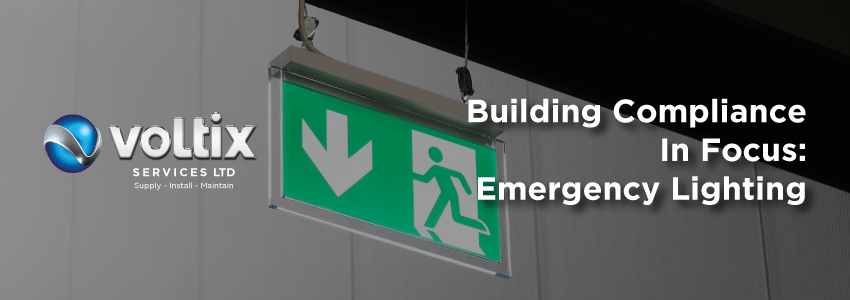Your Emergency Lighting Responsibilities – and the FM Solution
Non-domestic properties have a statutory responsibility to supply, test, and maintain emergency lighting systems. The reason for the regulations is to promote safety should the power supply go down for any reason. In such an event, emergency lighting provides illumination for safe evacuation or manoeuvre around the building’s interior. It can also support operational continuity in some contexts.
WHAT ARE THE LEGAL REQUIREMENTS FOR EMERGENCY LIGHTING IN THE UK?
In England, the primary guidance is laid out in the Regulatory Reform (Fire Safety) Order. This nominates a responsible person to oversee the safety of a building’s occupants. Primarily, this prescribes that emergency routes and exits must be signposted and have emergency lighting that sufficiently lights the way should the lights go out.
The needs of every building must be outlined in a fire risk assessment. This fire risk assessment needs to be reassessed every year to ensure it meets the changing needs of the premises. British Standards and Codes detail the nature and installation of emergency escape lighting systems.
HOW OFTEN DOES EMERGENCY LIGHTING NEED TO BE TESTED IN THE UK?
U.K. fire safety regulations prescribe that emergency lighting systems should undergo full and detailed testing once a year. It also states that a ‘flick test’ should be done once a month, which disconnects the mains to check the functionality of the units.
Testing involves simulated, circuit-by-circuit mains lighting systems failures. Using a ‘fishtail key’ is one way of conducting this testing. Annual testing requires three-hour load testing, including battery testing and maintenance. Once the mains failure simulation has taken place, lighting failures and issues need to be noted and a plan of action to rectify problems should be devised.
It can take up to 24 hours for batteries on emergency lighting systems to recharge after a full discharge test. For businesses, testing should be planned around periods of non-occupancy – like over the weekend. In full-time tenanted buildings, other strategies may be necessary to ensure that systems work around testing times.
Digital transformation offers an exciting shift away from manual processes here, with IoT solutions supporting automation. This works to ensure systems are in consistently good working order, with insights on undesirable changes to expedite repairs and hardware replacement.
PLAN FOR DESIGN, INSTALLATION, TESTING, AND MAINTENANCE OF EMERGENCY LIGHTING SYSTEMS
The kind of emergency lighting system your building requires depends on the nature of your business. For example, the emergency lighting system is not always required to provide light at the same intensity as the mains (however, it should be bright enough for safe evacuation). By working with the qualified engineers at Voltix Services, system designs and the ideal testing regime are all part of our compliance services.
Working with the right facilities maintenance team holds the following benefits:
- These professionals can advise on the steps that need to be taken to determine the extent and details of the emergency lighting system within a particular building.
- They can also provide insights on the suitability of systems in respect of applicable British standards and codes.
- Qualified engineers can anticipate, identify, and problem-solve any challenges.
- They also perform non-disruptive testing procedures, addressing any faults and adhering to compliance-prescribed reporting and admin.
WORK WITH VOLTIX SERVICES, THE PROBLEM-SOLVERS
The team of directly-employed engineers at Voltix Services offer consistently excellent customer service. We keep our finger on the pulse of changing regulations. This keeps you compliant, so you can focus on your core business. Contact us for comprehensive facilities maintenance solutions and download your free compliance checklist here.

